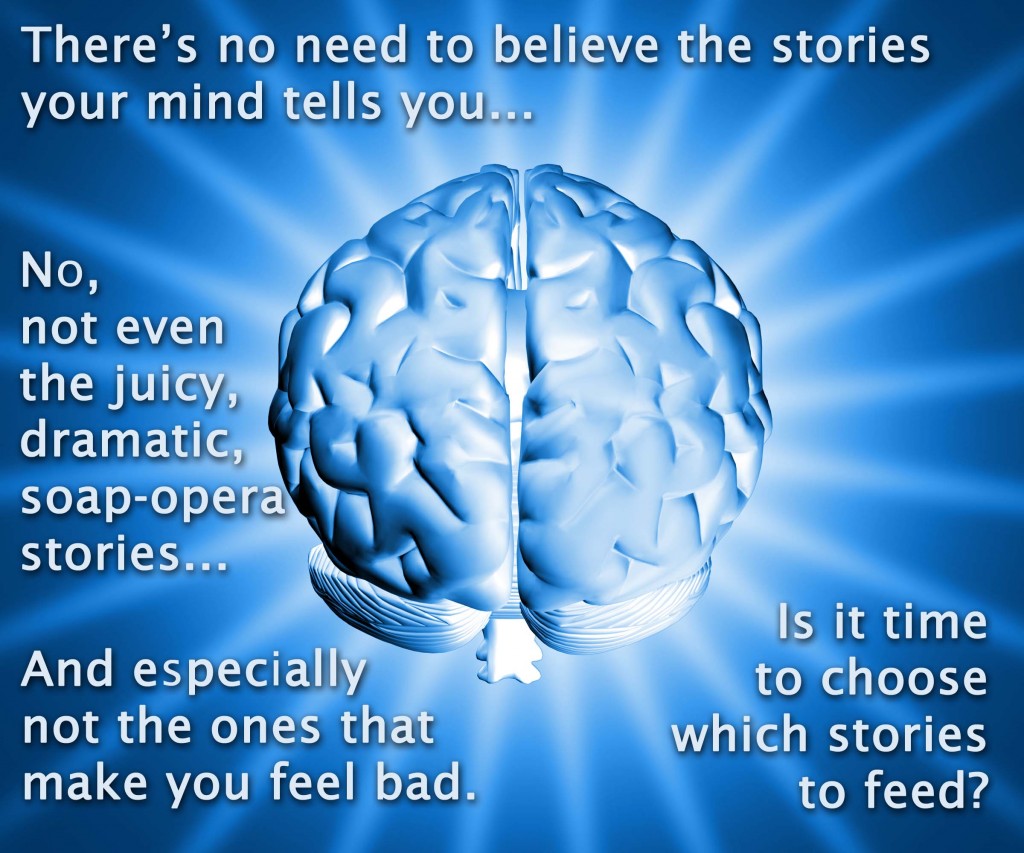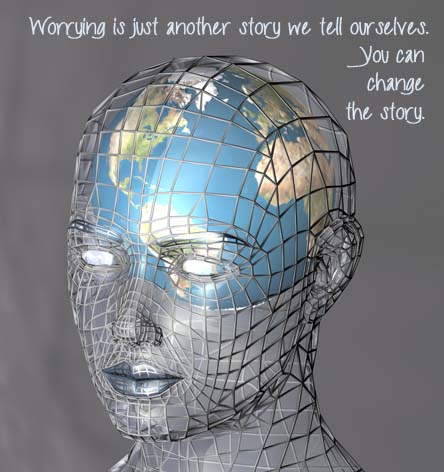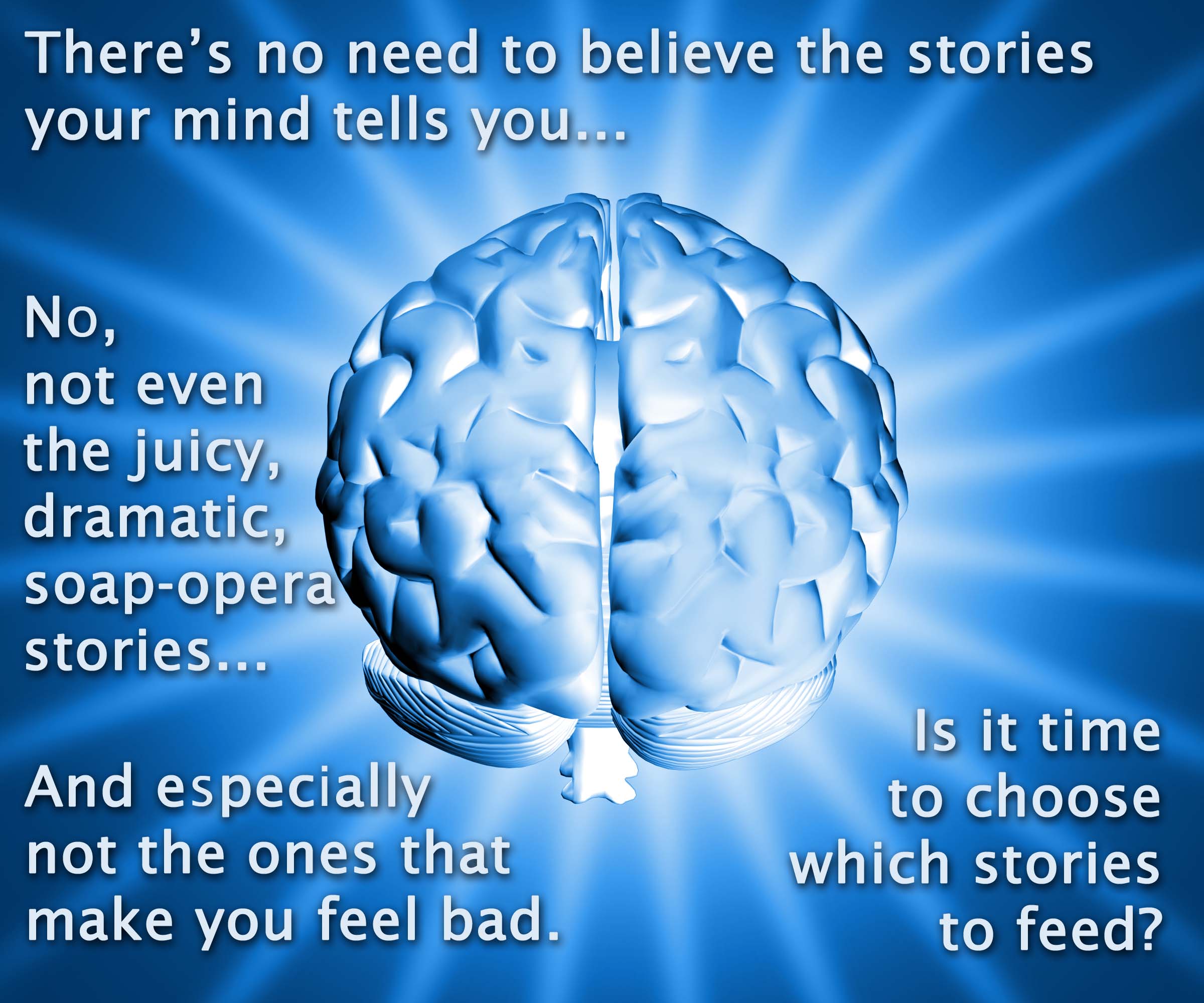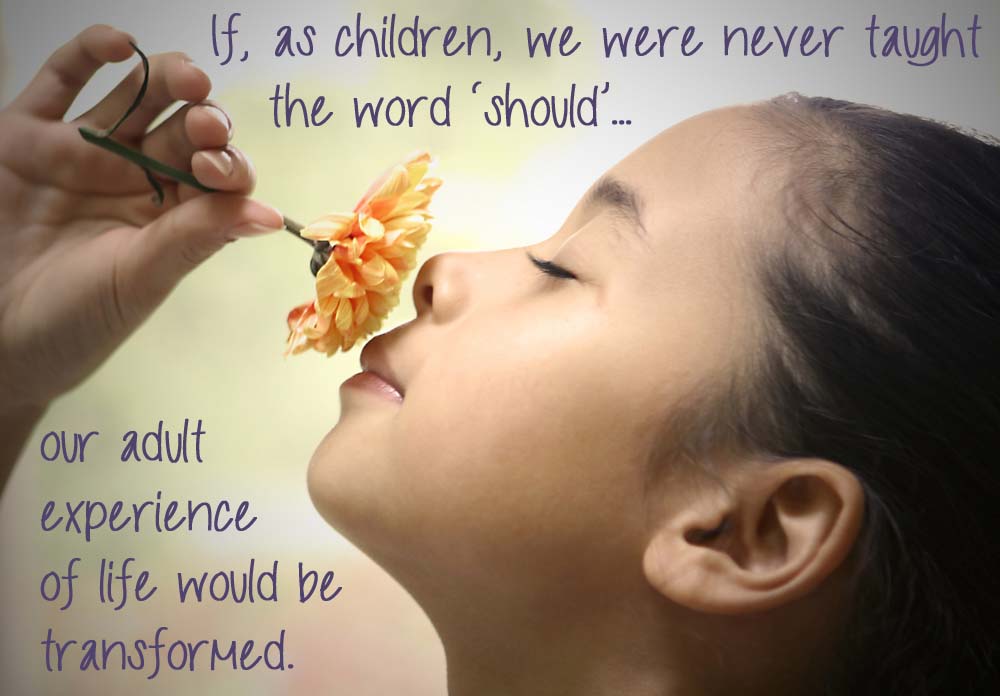Just because you told yourself the story, it doesn’t mean it’s true.
Hi %%FIRST_NAME%%,
Welcome to day 15 of How To De-Stress With Mindfulness.

Here’s where to listen to the audio recording of today’s message.
[audio:https://s3-eu-west-1.amazonaws.com/htdswm/03/Day15-full-message.mp3]
![]() To download it to listen offline, right click and choose ‘save as’ for this link: Day 15 MP3
To download it to listen offline, right click and choose ‘save as’ for this link: Day 15 MP3
How are you getting on so far? Any insights? Any questions?
![]() How did you get on with the ideas and exercises from last time? Fancy sharing?
How did you get on with the ideas and exercises from last time? Fancy sharing?
Week Three: How are you getting on?:
How are you getting on?
![]() And here are all of your week three resources:
And here are all of your week three resources:
Week Three Resources
Over this week’s emails, we’ll be talking about:
- Mindful walking – a wonderful mindfulness technique for coming back to the ‘here and now’, getting clarity of thinking and cutting your stress levels, fast.
- How no one else can make you feel stressed…
- How this is great, because it means you have the power to make the changes you’re looking for in your life.
- How letting go of our Monkey Mind’s stories is the key to shifting your stress levels down a gear – for life.
- A magic wand for worrying
Are you ready to dive in today?
It’s Time To Stop Believing What Your Monkey Mind Is Telling You
 Your mind is doing its best. And it doesn’t realise the hassle it’s causing. In fact, it’s doing exactly what we have trained it to do – over the decades.
Your mind is doing its best. And it doesn’t realise the hassle it’s causing. In fact, it’s doing exactly what we have trained it to do – over the decades.
It tells us stories. It passes comment. It evaluates. It tells us what to do and how to feel.
But it can only speak from the perspective of the filters, experiences, beliefs, habits, hopes and fears it has picked up over the years. So its view is biased.
The mind’s stories are more of an illusion – an interpretation – than a statement of fact.
But we believe everything it tells us.
If it tells us we can’t do something, we believe it. If it tells us that our dreams are unrealistic, we believe it. If it tells us that things will go wrong, we believe it.
If it tells us that something is stressful or that we should feel stressed, we believe it.
Just because your mind tells you something is so, it doesn’t mean it is.
It’s ok to question what our mind tells us. It is full of opinion, prejudice, assumptions and leaped-to conclusions, based on a lifetime of practice.
When it sees a stress trigger, it automatically dives into telling us stories about previous stresses. It automatically triggers the unconscious mind’s auto-pilot programmes for reacting to those stress triggers. It effectively removes our choice.
And if we’re in the habit of feeding that adrenalin with more stories, then we’re likely to indulge in telling ourselves (and others) stories about that stress trigger that keep the hormones running high and the adrenalin pumping. We all love a good drama; and the more emotionally charged, the better! In fact, many of us are so attached to our stories that it becomes like an addiction.
But there’s some good news:
All you need to do to reclaim your choice over how to respond is to spot that you are telling yourself a story – then you can choose whether or not to feed it.
“Do I really want to believe this story? Is it really true? Or is it just a story?”
And perhaps the best news is that mindfulness practices help you to spot more easily whether you are telling yourself stories 😉
![]() I’m curious: what are your ‘stress stories’?
I’m curious: what are your ‘stress stories’?
At which point of a stressful situation do you notice them creeping in?
And what happens, if you press ‘pause’ and choose whether or not to believe that story? And whether or not to feed it?
How about sharing in the online community – and finding out how others ‘do’ this aspect of stress?
Do I really want to believe the ‘stress story’ I am telling myself today?
Leading on from the whole ‘stress-story’ scenario, there’s a way of applying these insights to help with stress-related worry and anxiety.
Want A Magic Wand For Worrying?
Here’s a statement that might provoke some rotten tomatoes from those of you who are seriously ‘into’ worrying 😉
Worrying is just another story we tell ourselves.
 Esther Hicks says that “Worrying is a way of creating a future you don’t want.” What she means with this is that if we spend our time telling ourselves stories about what could go wrong and what we don’t want (i.e. worrying), then we are giving all of our attention to those things and we are more likely to spot them – and even actively create them – unconsciously, in our future.
Esther Hicks says that “Worrying is a way of creating a future you don’t want.” What she means with this is that if we spend our time telling ourselves stories about what could go wrong and what we don’t want (i.e. worrying), then we are giving all of our attention to those things and we are more likely to spot them – and even actively create them – unconsciously, in our future.
It’s easy to put decades of effort, energy and actions into worrying about those worries or trying to avoid them. The funny thing about worrying is that it never fixes anything. And it feels awful. It’s a habit that many of us are addicted to, but it just breeds more worries.
When we’re worrying, we get stuck in our heads, going over and over and round and round the thing that may never happen – re-telling that story.
The problem is that worrying about it means we’re giving it so much attention that we actually make it more likely to happen.
So what can you do instead? Get active!
If you spot yourself worrying, take a moment to stop and ask yourself two questions:
- “Is this real? Or is it a story I could stop telling?”
- “What could I do differently, so that this is no longer an issue? Is there an action I could take?”
If it’s something outside of your control then it’s time to shift your perspective, so you can move to a place of acceptance.
But if it’s something you can do something about then taking a step towards a solution can remove a huge weight from your shoulders. You’re aiming for any choice that brings a genuine sense of relief – it’s a sign that you’re finally heading in the right direction.
Is it time to let go of something you have been worrying about, today?
![]() Do you need a ‘magic wand’ for worrying?
Do you need a ‘magic wand’ for worrying?
How will your experience of life change, once your Monkey Mind accepts that worrying is just a pile of stories?
Or do you find your mind reacting strongly against this concept?
Either way, it would be great to hear from you over at the online community:
Want A Magic Wand For Worrying?

Today’s Affirmation:
I can influence the stories I tell myself. I choose to feed the stories that bring me relief and happiness.
What is your story doing for you?
[audio:https://s3-eu-west-1.amazonaws.com/htdswm/03/Day15-your-story.mp3]
Sometimes it can feel difficult to let go of a story.
Sometimes it’s like a petulant child, clamouring for our attention.
Sometimes it can seem as though it just keeps popping back up, when we least expect it.
Stories can be clever like that.
Want to know what’s going on?
Whenever a story pops up, ask yourself the question:
“How is this story helping me?”
(I know that seems weird!)
… And let the answer bubble up, without judgement; without the interference of your rational mind.
You might like to jot down your insights in your De-Stressing Journal. We’ll be looking at what psychologists call ‘secondary gain’ soon – it’s one of the things that can sabbotage your efforts to de-stress. So having examples of it will give you a head start when we get to that point.
Remember that pesky ‘mind-body link’?
Remember the ‘powerful and strong’ experiment from your first day’s email? It hopefully gave you an insight into how your mind – your thoughts – and your body – your physiological experience of life – are linked… and how these can impact during times of stress.
I’m inviting you to play with a more subtle exercise this time. It tests things out the other way round: demonstrating how the body can influence the mind.
I’d like you to try an experiment with me today, to experience the difference your facial expression can make. It only takes a few minutes – and it might just change your life.
Which Face Are You Wearing?
[audio:https://s3-eu-west-1.amazonaws.com/htdswm/03/Day15-which-face.mp3]
You’ll probably want some privacy for this, so you don’t feel self-conscious. You’re going to be doing a good impression of a champion gurner… 😉 And you might want a mirror, so you can check what you look like (if you’re feeling like an exhibitionist, you could even take a photo for the forum…)
- Before you start, take a ‘snap shot’ of how you are feeling
How does your body feel? What emotions are you experiencing? What kinds of thoughts are you thinking?
 Now pick your best grumpy face.
Now pick your best grumpy face.
You know, the one you would choose if you were up for an Oscar-winning performance. Then crank it up a notch. Really ‘do’ your grumpy face.
- Repeat that snapshot.
How are you feeling? How does your body feel? What emotions are you experiencing? What kinds of thoughts are you thinking?
- Give yourself a quick shake to let go of that ‘face’.
 Repeat the process with your best ‘sad’ face.
Repeat the process with your best ‘sad’ face.
The whole puppy-dog eyes. The ultimate sympathy-winning sad face. Crank it up a couple of notches.
- Repeat that snapshot.
How are you feeling? How does your body feel? What emotions are you experiencing? What kinds of thoughts are you thinking?
- Give yourself a quick shake to let go of that ‘face’.
 Finally, pick your best ‘happy face’.
Finally, pick your best ‘happy face’.
It’s the one where the sun is shining from your eyes and the world has no doubt that you’re in a good mood. Really crank up the effect until it’s the “I’ve just won the lottery” (or equivalent!) level happy face.
- Repeat that snapshot.
How are you feeling? How does your body feel? What emotions are you experiencing? What kinds of thoughts are you thinking?
- Give yourself a quick shake to let go of that ‘face’.
What did you learn?
What differences did you notice?
How did the gurning go?
How did your ‘face’ impact your emotions? Your body? Your thoughts?
![]() Want to share any insights or questions over at the forum?
Want to share any insights or questions over at the forum?
Which ‘Face’ Are You Wearing?
Most people who do this little experiment discover that there’s a powerful connection between our facial expressions, our physical body, our thoughts and our emotions.
Your mind and body – and emotions – are inextricably linked. This is a proverbial double-edged sword:
It means that if your Monkey Mind is running on auto-pilot, then your physiology and emotions are running at its whim.
But it also means that there are steps you can take, with your physical body, to shift your mind’s patterns and influence your thoughts and emotions.
And that’s a really important principle behind this week’s mindful walking practice.
I invite you to try out the following visualisation, to prove to yourself how this week’s mindfulness technique will work.
Visualising Mindful Walking
[audio:https://s3-eu-west-1.amazonaws.com/htdswm/03/Day15-visualising+mindful-walking.mp3]
Aside: This technique is all about visualising – imagining pictures in your head – and imagining the physical sensations you would experience. If you don’t naturally ‘think’ in pictures (like me!), that’s ok. Just allow yourself to get a ‘sense’ of what is in each step of the exercise. It will still work for you.
- Start by taking a ‘snapshot’ – how are you feeling?
Which physical sensations do you notice? What kinds of thoughts are you thinking? What’s the ‘tone of voice’ of that inner dialogue? What kind of speed it is running at? What kinds of images are you seeing in your head? Are they fast-moving? Slow-moving? Bright? Dull? Stationary? Just take a moment to notice – and then let it go.
- Now imagine you’re going for a walk
It’s up to you where – it might be in the city or on a country path. Get a sense of your surroundings. It might help if you close your eyes.
- Speed that walk up to be fast
Make it as fast as you can comfortably imagine going. Keep going – in your mind – on that high speed walk, hurrying to be somewhere. Keep doing this for about a minute.
- Take that snapshot again.
What are you thinking? What are you seeing? Which emotions are you feeling? Which physical sensations do you notice? How is your heart beat? And your breathing?
- Shake your body to release that part of the practice.
- Now, settling down, you’re going to go for another walk – in the same environment.
- This time I’d like you to imagine that you’re walking calmly, fairly slowly.
Take time to breathe deeply and becoming aware of your feet connecting with the earth beneath you. Become aware of each step. Notice how your body moves. Allow yourself to absorb the world around you, as you consciously take one step; and then another; and then another. You might like to tie your breathing into your walking rate, if that’s comfortable for you. As you enjoy this gentle walk you might find you can breathe in for 2 or 4 steps and then breathe out for 2 or 4 steps.
- Pause. Take that snapshot again.
What are you thinking? What are you seeing? Which emotions are you feeling? Which physical sensations do you notice? How is your heart beat? And your breathing?
- Shake your body to release the practice.
What did you notice? Any insights?
![]() What did you experience with this exercise? Any insights?
What did you experience with this exercise? Any insights?
What did you notice? How did it impact your stress levels?
Imagining Mindful Walking
Slow your body and you slow your mind.
Slow your mind and you cut your stress levels.Imagining slowing down is enough to make a difference.
The second half of this exercise was all about mindful walking. It’s a wonderful mindfulness technique that we’re going to be playing with this week.
The Benefits of Mindful Walking
 Mindful walking helps you to:
Mindful walking helps you to:
- Bring your awareness out of your chattering mind and back into your physical experience of life
- Get out of worrying about the past and future and come back to where all your power and choice lies – right ‘here and now’.
- Think more clearly, feel more calm and bring that smile back to your face
- Rebalance the sympathetic nervous system (‘fight or flight’) with the parasympathetic (relaxation) nervous system, reducing adrenalin levels, allowing stress hormones to reduce and helping you to feel more relaxed and in control
- Develop a practical tool to cut your stress levels in as little as ten mindful steps, once you are used to practising it.
Mindful walking is accessible to everyone. If you can walk, you can learn to walk mindfully. As you will have found in the last exercise, if you can’t get up and go for a walk, you can imagine it, with similar benefits.
How To Practise Mindful Walking
Practising mindfulness while you walk is amazingly powerful, as a way of training your mind to come back into the present moment, but without eating up loads of your time.
You may have ‘done’ mindful walking before, or it may be new to you. Either way, I invite you to let go of any preconceptions and release anything you have done before, coming to this mindful walking process with fresh eyes (or feet!).
We are going to be using walking as a key technique, to build on during the various stages of this course, for 3 main reasons:
- Walking is something we all do, every day, so there’s no excuse not to practise.
- Even if you can’t walk, you can visualise walking, and achieve similar benefits.
- Walking is a very physical process, which most of us do on auto-pilot, so it’s perfect for training ourselves to come back into the present moment and to gently let go of the chattering mind.
Here is this stage’s mindful walking process. It’s simple to follow. Don’t ‘try’ too hard. Just flow with it and let it be enjoyable.
Mindful Walking – Stage 1
[audio:https://s3-eu-west-1.amazonaws.com/htdswm/03/Day15-mindful-walking.mp3]
START: This walking can be done anywhere – outside in nature or even walking up the stairs or around your kitchen. Choose somewhere that you can be on your own, for the first few times.
- Take a ‘snapshot’ of how you are feeling – physically, emotionally, mind-wise. We’ll come back to this at the end.
- Start walking. Slow your speed down by about 10%.
- Focus all of your awareness on your feet. Become fully aware of the physical sensations of your feet on the floor, as they connect with the Earth.
[Doing this barefoot on grass or sand is a special treat – though not essential!] - If your attention wanders, gently guide it back to feeling the physical, tactile connection of your feet with the earth.
- Once you are comfortable with this process, you might like to add in a silent ‘thank you’, perhaps to the Earth, for supporting each step, without agenda or judgement.
[This also give your chattering mind something to ‘do’, while you’re practising ‘being’ mindful!]
END: When you feel ready, release your practice and take that snapshot again. How are you feeling – physically, emotionally, mind-wise? Compare that to the snapshot from the beginning. With practise, you’ll notice that the mindful walking makes a tangible difference.
At first, just do this for a few minutes – or even just 10 really, truly conscious, ‘present’ steps. As you get used to it, aim to build up to 10 minutes.
You can do it as often as you like, during the day.
![]() When you have played with this, how about popping by the online forum to share how it went?
When you have played with this, how about popping by the online forum to share how it went?
How Did You Get On With Mindful Walking?
Remember: it takes practice!
Expecting ‘instant results’ will make it harder for you to keep going with this.
That’s why we’re using the ‘before and after snapshot’, to help you spot the changes. Over time, these will become more obvious. For now, it’s enough simply to keep going.
So please make sure you do your ‘mindful walking’ at least once today!
That’s all for today.
Next time we’ll be looking at the Monkey Mind’s tricks and stories, and discovering practical techniques you can use to let go of them, setting yourself free from some of the old auto-pilot patterns and reclaiming your power of choice.
Your next email will be with you in 3-4 days.
Wishing you a wonderful week!
Namaste,
![]() [Read more…] about Day 15: Does Your Magic Wand For Worrying Start With Your Feet?
[Read more…] about Day 15: Does Your Magic Wand For Worrying Start With Your Feet?



